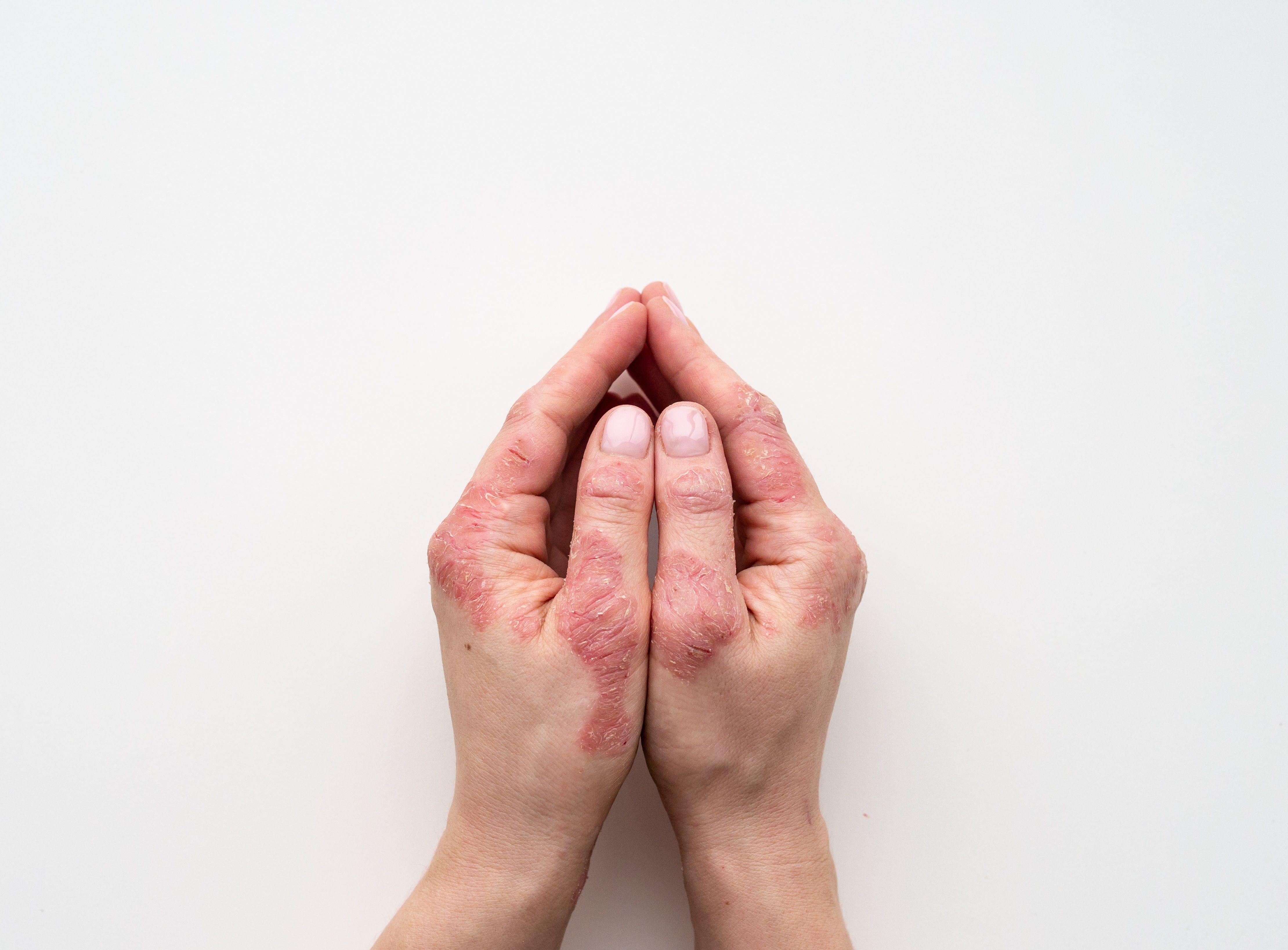- Center on Health Equity & Access
- Clinical
- Health Care Cost
- Health Care Delivery
- Insurance
- Policy
- Technology
- Value-Based Care
Psoriasis Treatment Remains Effective, Safe After Switch From Ustekinumab to Biosimilar SB17
Biosimilar SB17 demonstrated clinical biosimilarity to reference ustekinumab after switching among patients with psoriasis for up to 52 weeks.
Biosimilar SB17 demonstrated clinical biosimilarity to reference ustekinumab after switching among patients with psoriasis for up to 52 weeks. | Image Credit: IIIRusya - stock.adobe.com

This article originally appeared on The Center for Biosimilars®.
Patients with psoriasis who switched from ustekinumab to its biosimilar, SB17, maintained long-term efficacy and safety, easing concerns about potential adverse effects and encouraging wider use of more affordable treatment options, according to a study published in the Journal of Dermatological Treatment.1
Biologic treatments can improve efficacy and could be an alternative, affordable option that potentially revolutionizes the treatment landscape for patients with psoriasis, a dermatology condition. The FDA reported generic and biosimilar medicines generated over $3 trillion in savings for patients and the health care system over the last 10 years.2
Expert concerns have suggested switching from originators to biosimilars will result in adverse outcomes like diminished efficacy or increased hypersensitivity.1 Prior research has indicated serious adverse events, deaths, and treatment discontinuations found among patients who switched between a biosimilar and reference biologic were similar to those in patients who did not switch.3
Additional clinical evidence has indicated switching from originator products to the biosimilar version does not lead to undesirable clinical outcomes along with long-term efficacy and safety data that might be desired.1 Both the US and Europe approved biosimilar SB17 for patients with plaque psoriasis, psoriatic arthritis, and inflammatory bowel disease.
A phase 3, randomized double-blind, multicenter trial was conducted to assess the efficacy, safety, and immunogenicity of SB17 to reference ustekinumab following switching to determine if clinical biosimilarity remained up to week 52. There were 45 centers from 8 countries (Czech Republic, Estonia, Hungary, Republic of Korea, Lithuania, Latvia, Poland, and Ukraine) who participated during July 2021 to November 2022.
There were 503 participants at baseline who had a Psoriasis Area and Severity Index (PASI) greater than or equal to 12, a Physician’s Global Assessment of 3 or more, and a body surface area involvement of at least 10% or more at screening and randomization. By week 28, participants were randomized (n = 481) to either continue SB17 (SB17+SB17; n = 237), switch from ustekinumab to SB17 (UST+SB17; n = 122), or continue ustekinumab (UST+UST; n = 122).
Most participants (96.9%) completed the study for up to 52 weeks, with a balanced drop-out pattern represented (SB17+SB17, 1.7%; UST+SB17, 4.1%; UST+UST, 4.9%).
The PASI from baseline up to week 52 was nearly identical and sustained without signs of lack of efficacy across each treatment group. At week 52, the percent change of PASI was comparable between treatment groups (SB17+SB17, 95.8%; UST+SB17, 95.6%; UST+UST, 94.5%). The secondary efficacy endpoints from baseline to week 40 to week 52 were comparable across all 3 treatment groups.
Safety profiles for biosimilar SB17 and reference ustekinumab were comparable. Treatment-emergent adverse events (TEAEs) occurred in 16.5% of patients continuing SB17, 13.9% of those switching to SB17 from ustekinumab, and 23.8% of those remaining on ustekinumab. The most common TEAEs were COVID-19 and nasopharyngitis. Notably, no injection site reactions or systemic hypersensitivity were observed after switching between medications.
Regarding study limitations, the ongoing war in Ukraine disrupted some study sites. However, these disruptions were evenly distributed across treatment groups, minimizing any potential bias in the results.
These findings “may not prevent nocebo effects post-market, which may require additional efforts to mitigate, the lack of safety issues with ustekinumab switching to SB17 should be reassuring,” stated study authors.
References
1. Feldman SR, Narbutt J, Giampiero G, et al. Biosimilar SB17 versus reference ustekinumab in moderate to severe plaque psoriasis after switching: phase 3 study results up to week 52. J Dermatol Treat. 2024;35(1). doi:10.1080/09546634.2024.2436607
2. 2024 savings report. Association for Accessible Medicines. June 12, 2024. Accessed January 23, 2025. https://accessiblemeds.org/resources/blog/2024-savings-report/
3. Ferreri D. Analyzing safety of switching from originators to biosimilars: a meta-analysis of 21 trials. The Center for Biosimilars®. February 10, 2024. Accessed January 23, 2025. https://www.centerforbiosimilars.com/view/analyzing-safety-of-switching-from-originators-to-biosimilars-a-meta-analysis-of-21-trials
Real-World Data Support Dual Benefit of Biologic Therapy for Hidradenitis Suppurativa
September 27th 2025The study confirms that biologics are highly effective in real-world HS management, and highlights the need for a comprehensive treatment strategy considering both skin symptoms and systemic health.
Read More
